59kV is no joke
HV experiments no longer require dodgy DIY supplies: Chinese manufacturers (CXDZ) started to make affordable HV power supplies (in this case - 60kV/10mA). These are mainly used and designed for electrostatic air filters which are obviously a big business in China. Output is floating - so one can tie ether + or - to ground (that is especially important for X-Ray tubes with water cooling, where anode is touching the water and should be at ground potential).This is ~10kV ~2mA discharge:
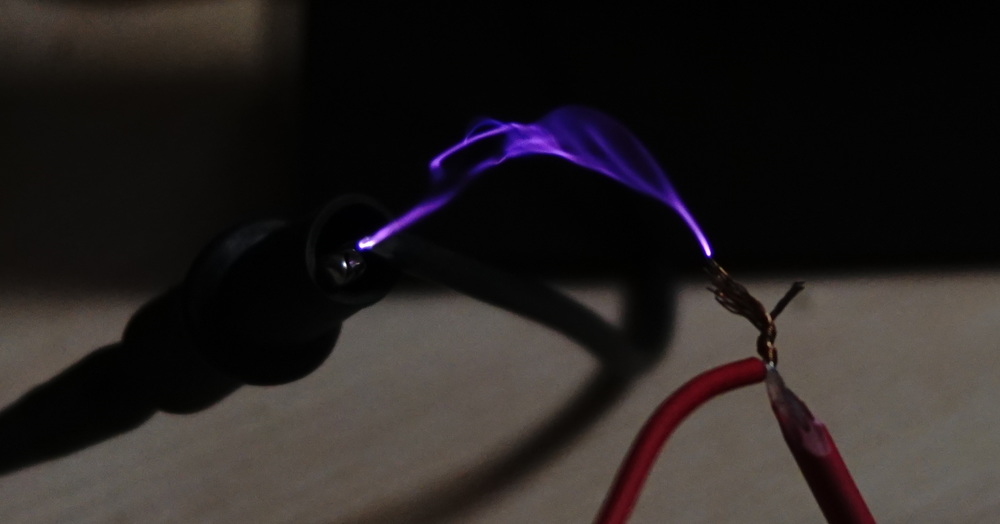
Mandatory warning: Anything above 50V can kill you in "suitable" conditions. Achieving that at 1-60kV is much easier.
When arc gets orange - things get scary, metal electrodes start to melt and evaporate. ~15kV ~12mA, 180W in arc:
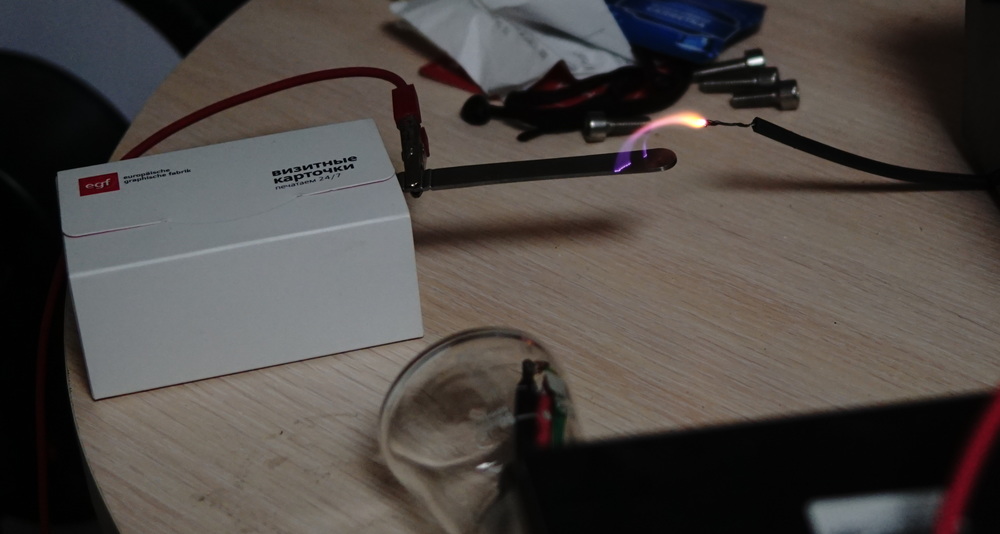
Droplets of molten copper on the wire:
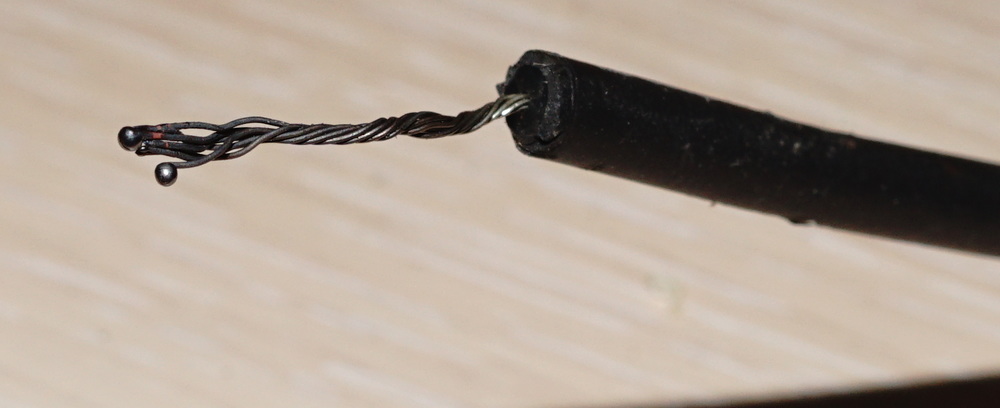
In some positions of electrodes "on the side" there is a "thick" discharge rather than thin arc:
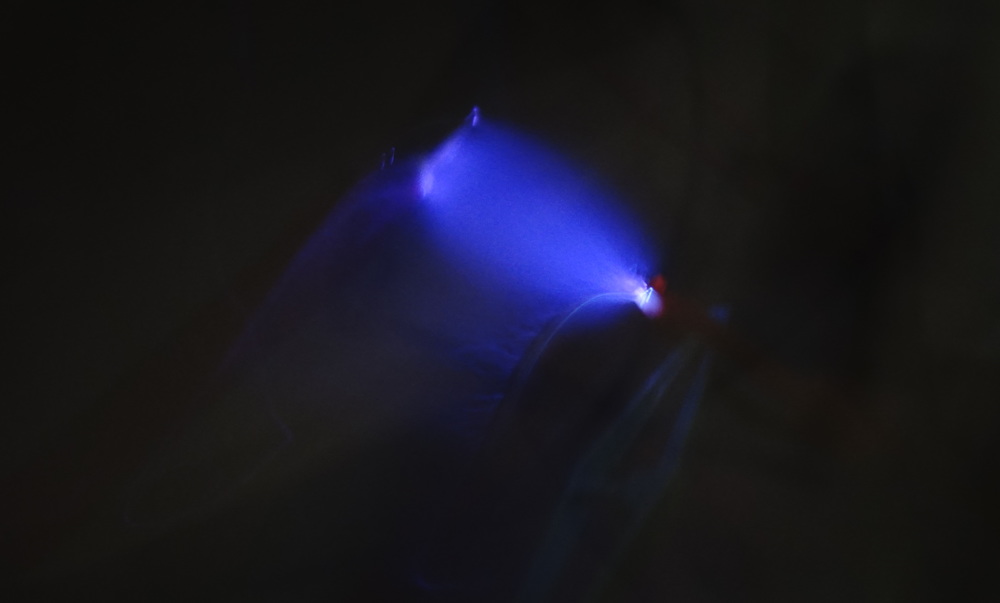
Here are my safety gloves - only rated for works up to 1000V, yet better than nothing. Random spark or arc will more likely go around the finger.
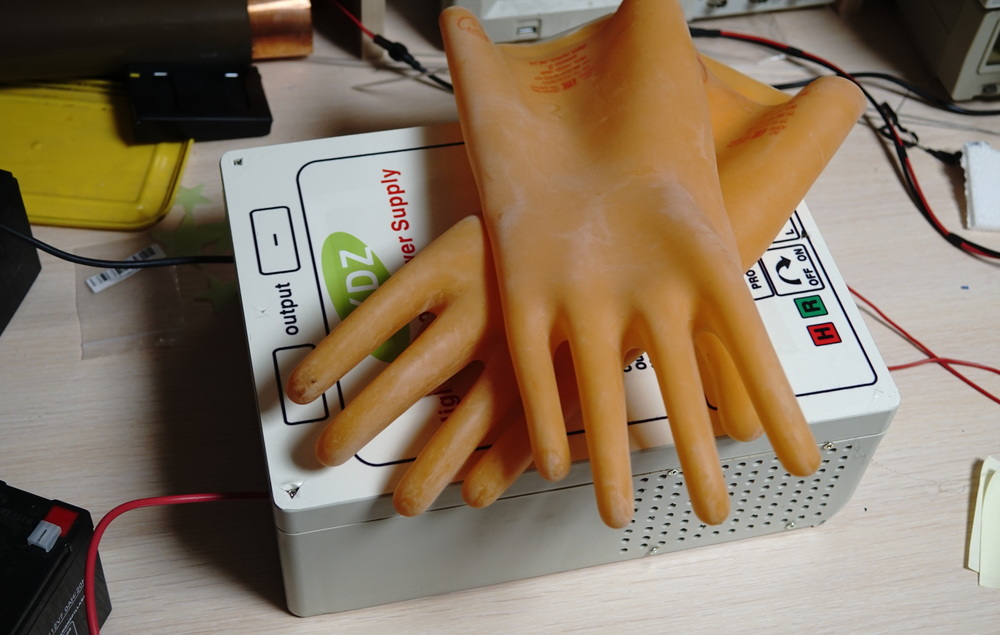
Inside the supply there are 4 transformers with HV diodes between them in HV heat-shrink tube. Everything is glued with some hot-melt white glue, looks not very reliable yet works just fine. On mains input they didn't omitted "unnecessary" common mode choke - that's a good sign.
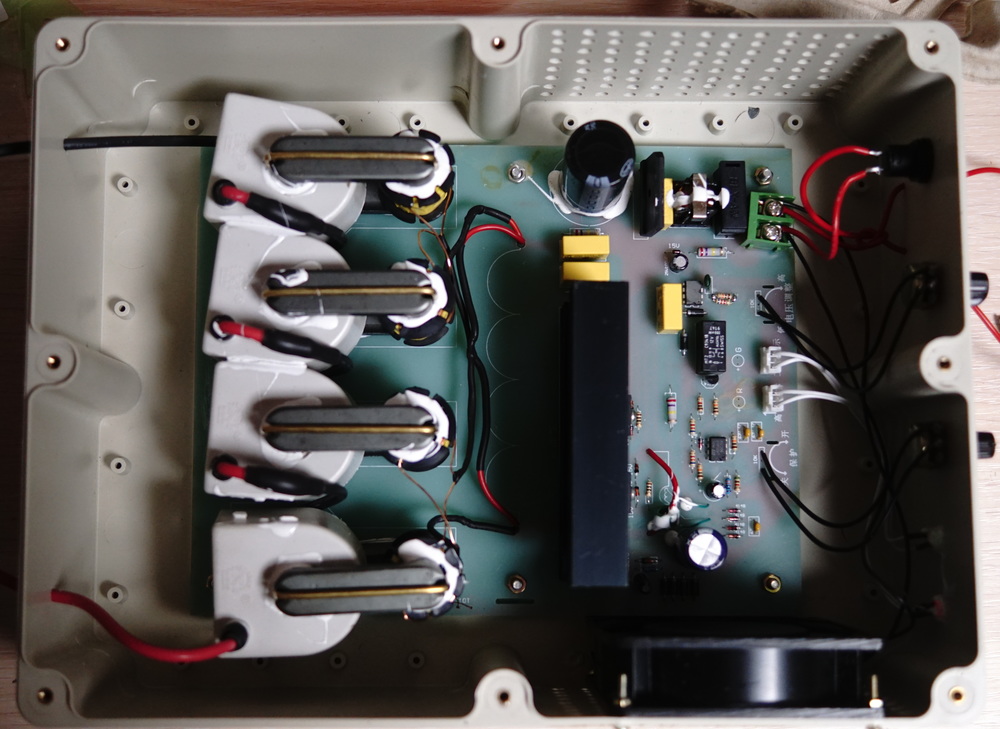
When running for max voltage had to isolate terminals with glass vials in order to suppress electric noise around sharp electrode features:
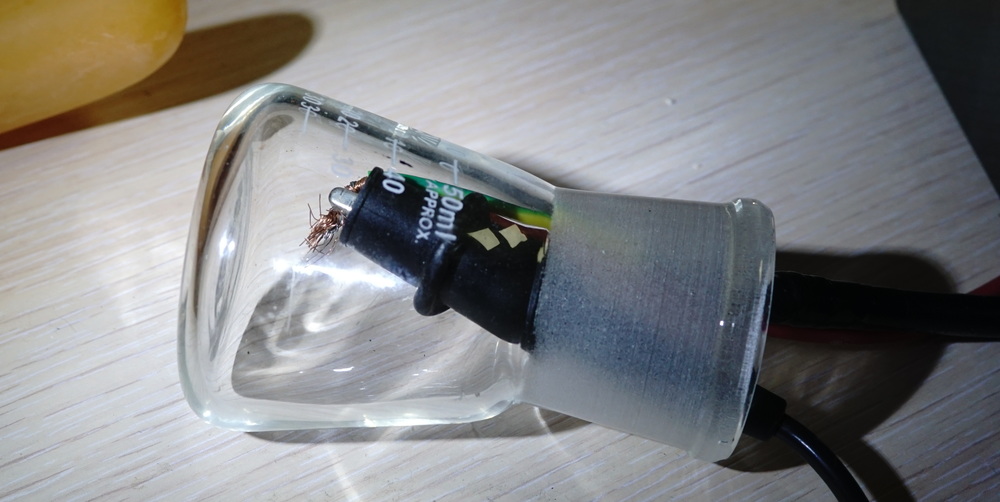
Initially power supply was limited to 42kV for reliability reasons. Manufacturer gave instructions how to unlock full 60kV (that requires cutting 1 resistor inside).
And here is where priceless HV experience starts. HV voltage probe has a note saying that negative lead should be at ground potential. What does that mean? It has decent isolation only on "hot" terminal. If you leave HV supply floating - negative terminal will go somewhere around -30kV, and positive to around +30kV (60kV total), but weak isolation of ground terminal in HV probe cannot handle that and there will be a breakdown. But if you tie one of HV terminals to ground - probe is now ok, but hottest transformer inside supply is much easier to breakdown. This is exactly what happened.
Last voltage I've seen while testing for maximum voltage - -59kV, after cranking up voltage a bit further - I've heard the scariest thing one might hear - sound of arc inside power supply. Instinctively you expect it go bang and fly into pieces across the room :-) Luckily for me, only 1 last transformer got damaged gracefully.
How you tie HV terminal to ground - use neutral or protective earth terminal? Surely protective earth, you only have 50% chance of finding neutral in EU outlet :-) This is my "ground" tool:
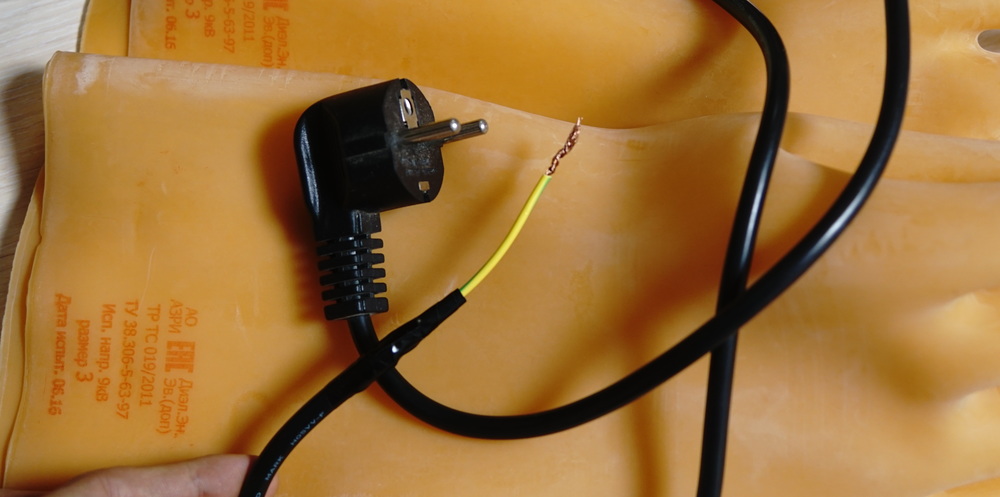
After transformer breakdown it no longer holds more than 20kV. I guess experience was well worth it. To repair it I've ordered 4 spare transformers with HV diodes from the manufacturer. They actually surprised me by including spare parts with the supply - power transistors(20N60C3), spare microchip with markings removed and some passives.
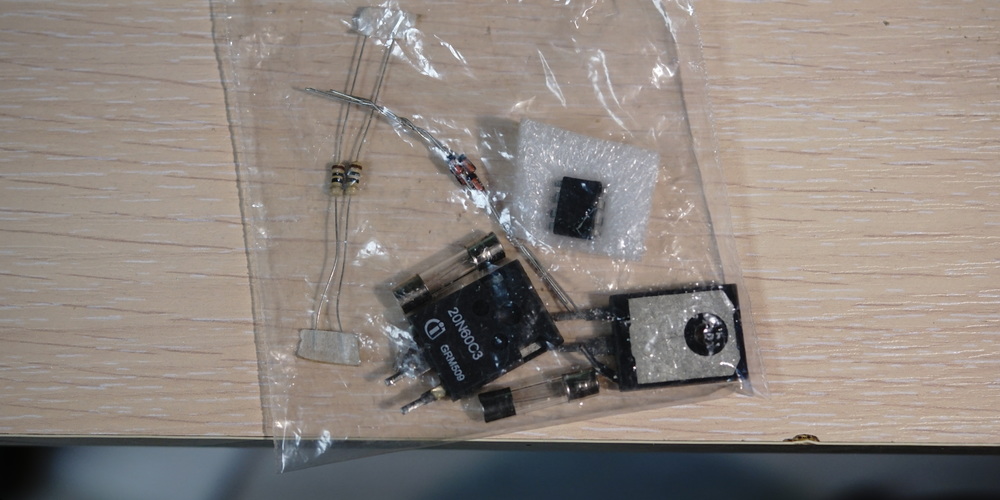
PS: This is how how 60kV cable looks like:
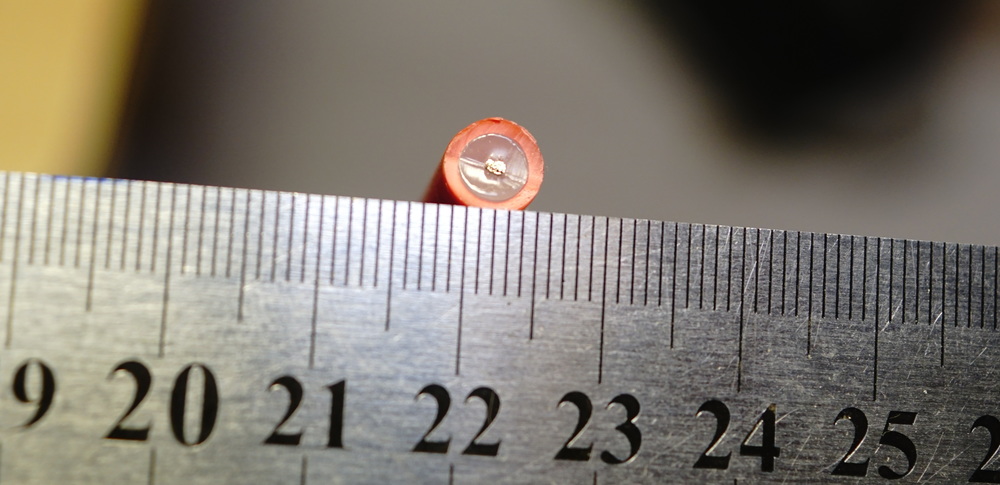





 @BarsMonster
@BarsMonster